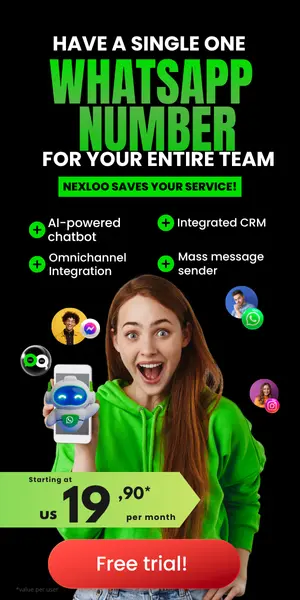Building customer loyalty is essential for paving the way for sustained business growth in today’s competitive market. You face the challenge of retaining customers while grappling with the costs associated with attracting new ones. This is where loyalty takes center stage. When you foster loyalty, you not only enhance customer retention but also turn clients into advocates for your brand. This loyalty fuels growth, reduces marketing costs, and amplifies your overall brand reputation.
Dive deeper into the significance of customer engagement and emotional connections. Your customers crave personalized experiences that make them feel valued and understood. By prioritizing these connections, you not only enhance satisfaction but also foster long-term loyalty. Tracking and measuring loyalty metrics is paramount for continuous improvement, guiding your strategy toward successful customer relationships.
This article will delve into actionable steps to build unwavering customer loyalty, discussing methods to create emotional ties, enhance engagement, and establish a customer-centric culture. By understanding the fundamentals of loyalty, you can transform your customers into lifelong supporters of your brand.
Understanding Customer Loyalty: Why It Matters for Your Business
Customer loyalty acts as a cornerstone for sustained growth and competitive advantage. When you build loyalty, customers tend to repurchase. This consistency boosts revenue while lowering acquisition costs.
Loyal customers serve as effective brand advocates. They recommend your products to friends and family, generating valuable word-of-mouth referrals. This advocacy creates a positive feedback loop, enhancing brand reputation without heavy advertising investments. Thus, focusing on customer loyalty is crucial for your business’s long-term success.
Engagement plays a pivotal role in fostering loyalty. Businesses that prioritize meaningful interactions, such as personalized communications through platforms like WhatsApp, see higher satisfaction rates. Leveraging CRM tools amplifies these efforts by providing insights that guide tailored marketing strategies.
Emphasizing the emotional connection is equally important. When customers feel connected, their loyalty deepens, turning transactions into emotional relationships. Companies that resonate with their audience’s beliefs cultivate emotional loyalty, securing repeat business and cultivating lifelong supporters.
Lastly, measuring customer loyalty is essential. Analytics allow you to evaluate behavior, identify trends, and capture feedback. Using this data reveals opportunities to improve customer experiences and recognize potential areas for enhancement.
For instance, the Company Engaged Innovators boosted retention rates by 25% by implementing a customer loyalty program driven by insights from their CRM system.
The Intricate Connection Between Customer Retention and Loyalty
Customer loyalty is deeply tied to customer retention. When you effectively retain customers, you nurture an environment that fosters loyalty. Valued customers develop emotional connections with your brand, increasing their brand loyalty.
Engagement bridges retention and loyalty. Engaged customers positively interact with your brand, fostering a sense of community. Activities like loyalty programs or feedback surveys reinforce their decision to stay loyal, leading to improved retention rates.
Brand advocacy also emerges from strong loyalty. Satisfied customers promote your business through word-of-mouth and online reviews, serving as a powerful marketing tool while contributing to retention. Positive experiences shared by existing customers increase trust with potential new clients.
To cultivate this connection, prioritize personalized customer experiences. Tailoring communications to individual needs deepens relationships and strengthens loyalty. CRM tools, like those integrated with WhatsApp, streamline these processes, ensuring timely interactions that resonate with your customers.
Tracking retention metrics provides invaluable insights. Understanding retention patterns allows you to spot issues early, enabling proactive measures to mitigate churn. Regular engagement audits help refine your strategies for deeper customer loyalty.
For example, the Store Plus Online enhanced their customer retention rates by 30% after analyzing feedback from engagement audits, leading to improved service offerings.
Step 1: Establishing a Customer-Centric Culture
Building loyalty begins with establishing a customer-centric culture. Prioritizing customers at every interaction ensures satisfaction drives your business decisions. This mindset forms the bedrock of lasting customer relationships.
Empower your team to prioritize customer needs. Training programs focusing on customer engagement skills enhance service delivery. When employees understand their influence on retention, they are more likely to excel in service.
Promote effective communication to reinforce the customer-first mentality. Regularly sharing success stories internally nurtures motivation and emphasizes the importance of employee roles in building loyalty. Utilizing CRM tools enhances customer engagement through clear communication.
Implement a feedback loop to continuously improve services. Actively seeking customer feedback signals that their opinions matter, enhancing satisfaction and driving loyalty. Responsive adjustments based on feedback pave the way for stronger brand connections.
Cultivating a culture of innovation helps meet evolving customer needs. Encouraging team proposals fosters a proactive approach toward enhancement, strengthening audience connections and motivating advocacy through satisfied customers.
For example, the Restaurant Flavor House adopted a feedback loop that improved customer satisfaction by 40%, allowing them to maintain a competitive edge.
Step 2: Leveraging Data for Personalized Engagement
Personalized engagement is vital for fostering loyalty. By leveraging data effectively, you can create tailored experiences that resonate with customers. Understanding behaviors and preferences enhances satisfaction and commitment.
Begin by collecting data. Consolidate information from interactions across platforms to build comprehensive customer profiles for precise segmentation. This ensures you address specific needs effectively in your marketing efforts.
Analyzing data uncovers trends that inform product development and promotional strategies. By identifying popular items, you can tailor offerings accordingly, improving retention and boosting advocacy through positive experiences shared by satisfied customers.
Utilizing CRM systems designed for WhatsApp enhances personalized engagement capabilities. Automating messaging enables you to create targeted campaigns. This maintains communication while saving time, ensuring constant connection with clients.
Furthermore, customizing communication through data insights fosters a sense of exclusivity. When customers feel appreciated, their emotional connection strengthens, leading to increased loyalty. Integrating personalized strategies is fundamental for nurturing long-term relationships.
Company Trendy Boutique saw a 25% increase in engagement after implementing tailored marketing strategies based on their customer data analysis.
Step 3: Consistency in Brand Messaging and Experience
Consistency in messaging and experience fosters customer loyalty. When customers encounter the same tone and values across channels, it reinforces their brand perception. A unified message promotes trust, strengthening emotional connections.
Businesses can achieve this through clear guidelines outlining brand voice and visuals. Sharing these guidelines across departments ensures every touchpoint reflects the brand identity, cultivating a seamless customer experience.
Moreover, consistency enhances engagement. A coherent experience keeps customers engaged, encouraging repeat purchases. Brands with consistent messaging tend to enjoy higher retention rates compared to those lacking coherence.
Listening to customer feedback also enhances consistency. By tailoring messages that resonate deeply with your audience, you demonstrate that their opinions matter, further solidifying customer loyalty.
CRM tools facilitate this by organizing customer interactions, ensuring aligned messaging. Automation allows for timely, consistent communications that nurture loyalty over time.
The Fashion Hub, a clothing retailer, saw an increase of 35% in return customers after streamlining their brand messaging across all platforms.
Step 4: Offering Exceptional Customer Service
Exceptional customer service is the foundation of loyalty. Ensure that your team understands and responds effectively to customer needs. This personal touch fosters trust and enhances customer retention.
Implement multi-channel support, allowing customers to engage through preferred channels such as phone, email, and social media. A seamless experience reinforces their value, directly impacting loyalty.
Responsiveness is critical. Customers expect quick replies and efficient solutions. CRM tools, especially those for WhatsApp, can improve responsiveness by streamlining communication and providing instant replies to inquiries.
Being proactive rather than reactive enhances service. Anticipating customer needs demonstrates genuine care, reinforcing loyalty and transforming transactional relationships into valuable partnerships.
Collecting customer feedback is crucial for service improvement. Regularly incorporating insights into service strategies conveys commitment to enhancing customer experiences, strengthening brand advocacy as a result.
The Gym XYZ improved customer satisfaction by 50% after enhancing their support system to proactively address customer inquiries and needs.
Step 5: Creating Loyalty Programs that Actually Work
Designing effective loyalty programs is crucial for enhancing loyalty and fostering long-term relationships. Successful programs emphasize emotional connections and value addition, encouraging customer retention and transforming customers into advocates.
Understand your customer base through surveys or behavior analysis. Tailor rewards to align with what they value most. Segment your audience to offer personalized incentives that resonate deeply.
Incorporate multiple engagement touchpoints within the program to maintain perceived value. Customers are likely to participate when they find continuous value, including rewards for social media interaction and referrals.
Transparency is key in loyalty programs. Clearly outline how points are earned and redeemed. This clarity encourages participation and maintains customer awareness and excitement about the program.
Additionally, gamification can significantly enhance engagement. Implementing challenges or tiered rewards fosters a sense of community and connection, motivating customers to remain active and loyal.
The Brand Cool Widgets saw a 45% increase in active loyalty program participants after adding gamified elements to their program, resulting in boosted engagement.
Step 6: Encouraging Brand Advocacy Among Your Customers
Encouraging brand advocacy enhances customer loyalty. When customers advocate, they influence others to engage with your products. This transforms satisfied clients into powerful marketing allies, extending your reach.
Create engaging experiences that resonate. Implement loyalty programs rewarding referrals to incentivize customers sharing positive experiences. Celebrate your advocates to encourage repeat purchases and strengthen their loyalty.
Engage advocates via social media to showcase testimonials. This validation reinforces their loyalty and builds community around your brand. An engaged community amplifies your message and fosters deeper connections.
Utilize personalized interactions through CRM systems for WhatsApp. These tools permit tailored communication, ensuring advocates feel special and appreciated. Such nurturing relationships increase the likelihood of advocacy.
Host exclusive events or groups for loyal customers. This fosters belonging and provides a platform for deeper interactions. Feedback collection during these engagements strengthens the bond, as customers appreciate their voice influencing decisions.
The Cosmetic Brand Beautify found a 60% increase in referrals from loyal customers after actively engaging them in community-building events.
Step 7: Measuring and Analyzing Customer Loyalty
Measuring customer loyalty is vital for evaluating retention strategies. Establishing clear metrics allows you to gauge customer loyalty effectively. Key performance indicators like Net Promoter Score (NPS) help assess customer satisfaction and predict future buying behaviors.
Monitoring retention rates provides insights into customer engagement. Higher retention indicates a valued product or service. This data reveals successes and opportunities for improvement. Tracking repeat purchase rates can unveil loyalty trends.
Brand advocacy plays a significant role in loyalty. Encourage satisfied customers to share experiences, leading to organic growth. Analyzing referral statistics reveals the extent of loyalty and advocacy among your customers.
Engagement metrics reflect loyalty. Customer feedback surveys provide sentiment analytics. Utilizing insights actively improves overall experiences, solidifying loyalty.
Implementing CRM tools streamlines measurement and analysis. These systems help collect important data, manage relationships, and track engagement levels. Proactive strategies ensure stronger customer relationships based on gathered insights.
For example, the E-Commerce Leader ShopSmart increased their customer retention rate by 35% after deploying a CRM solution to better measure and analyze customer loyalty.
The Long-Term Benefits of Building Customer Loyalty
Building customer loyalty is vital for sustainable growth. Valued, engaged customers not only exhibit advocacy, spreading positive word-of-mouth but also attract new clients. This loyalty cycle fosters a robust customer base impacting profitability directly.
Retention is often less costly than acquiring new customers. High loyalty maximizes customer lifetime value. Stable revenue streams allow you to invest in product innovation and service enhancements, which further cements loyalty.
Loyal customers are receptive to upselling. When you establish strong emotional connections, these customers act as advocates—impacting acquisition through trusted recommendations.
Regular engagement drives repeat interactions. The more frequently engaged customers are, the more likely they are to leave positive reviews, enhancing your brand’s reputation.
Investing in CRM systems streamlines your engagement strategy. Tools like CRM for WhatsApp allow prompt and effective communication, strengthening relationships while delivering tailored messaging relevant to customer interests.
The Company AllTech noted a 50% increase in customer lifetime value after focusing on loyalty and advocacy initiatives, demonstrating significant long-term benefits.
Conclusion: Your Next Steps towards Unwavering Customer Loyalty
Building unwavering customer loyalty takes ongoing commitment and strategic execution. Focus on customer retention strategies that prioritize genuine engagement. Understanding your customers’ needs lays the foundation for lasting relationships promoting advocacy.
Implement effective engagement practices. Regular communication through diverse channels, including personalized outreach via CRM for WhatsApp, significantly enhances the customer experience. Prompt responses and feedback gathering keep customers informed and engaged.
Cultivate a culture valuing customer input. Encourage sharing thoughts through surveys, which refines offerings and builds trust. Transparency fosters loyalty, a cornerstone of successful relationships.
Establish loyalty programs recognizing repeat business—creating incentives from discounts to exclusive product access. Recognition strengthens commitment, transforming customers into enthusiastic advocates.
Finally, continuously measure and analyze customer behavior. Use CRM systems to track interactions and preferences. Staying proactive about evolving needs fosters outstanding experiences that stand out in a competitive market.
By following these steps, you can pave the way for unwavering loyalty that significantly drives long-term success and growth. Explore how CRM for WhatsApp can enhance your customer interactions and further bolster your strategy by visiting this link.









